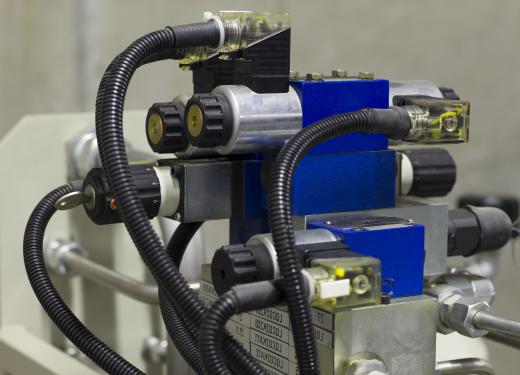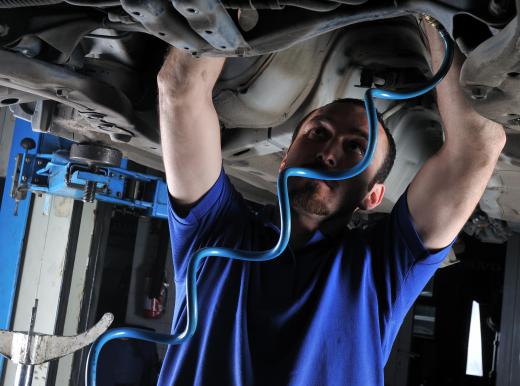An actuator is essentially a mechanism that activates a mechanical device. The different types of actuator design include wheel and axle, pneumatic, hydraulic, solenoid, screw and manual. Choosing an actuator design usually requires considering the cost, purpose, long-term goals and mechanical strength and how those factors interact with the task being performed. Many times, several actuators could work in a given situation, so performance optimization might become a primary concern.
Wheel and axle actuator designs are most often used when rotational forces and linear forces must be interchangeable. In these actuators, turning a wheel typically transfers radial motion to linear motion to change the state of the actuator systems. Similarly, linear motion also can be transferred into radial motion with these designs, which is often useful in complex systems or those involving motors.

Pneumatic actuators are often favored because of their low cost and simple design. These actuators use pressurized air to create the necessary forces and to activate the mechanism. Often used for industrial applications, these designs typically depend on some sort of external power source to provide the correct amount of pressurized air.
Hydraulic actuator designs are quite similar, but they use hydraulic fluids to create the desired pressures. These can often create large amounts of force in relatively small spaces but may be limited in their range of motion or force capacity. In the most basic design, hydraulic fluid is pumped into one end of a chamber, forcing the actuator into an activated position. As that fluid is released, the force is relieved and the actuator returns to its natural state.

Solenoid actuators use electromagnetic forces to activate mechanical devices. In these, solenoids are typically used to create electromagnets that exert magnetic forces on a mechanical spring and valve configuration. When the magnetic forces are applied, these actuators activate and, when the magnetic forces are stopped, the forces are released.
Screw actuator designs rely on the characteristics of simple machine screws to produce the desired force. As the screw is rotated, it can exert or release force on the internal mechanism. One benefit to these actuator designs is that they can be used to partially activate a mechanism based on particular requirements.
Manual actuators tend to be simpler, because they are controlled by hand. Any of the previous actuator designs can theoretically be controlled manually, such as a screw actuator or wheel and axle actuator. These actuator designs are typically best in situations where minimal force must be exerted or when those forces can be optimally controlled by human operators.
